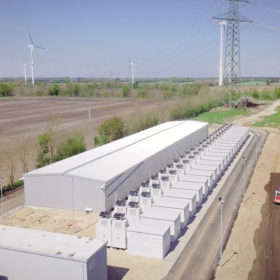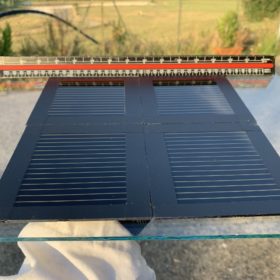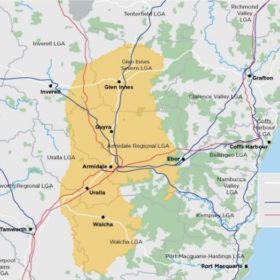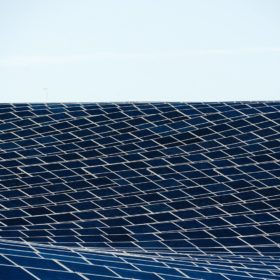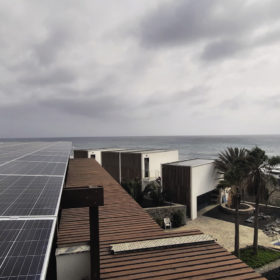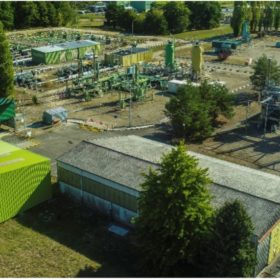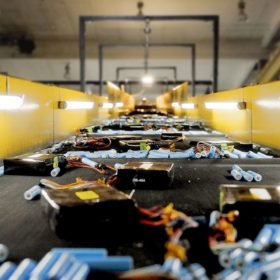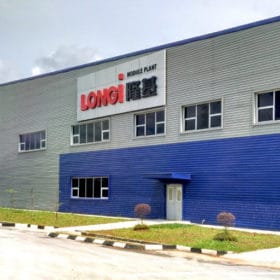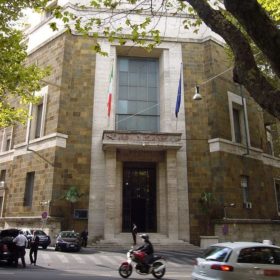Vanadium redox flow battery to control extreme power ramps in rooftop PV
Researchers in Portugal have tested how vanadium redox flow batteries can be integrated with rooftop PV to balance the system load to ensure firm power output. They proposed a 5 kW/60 kWh battery configuration for a 6.7 kW building-integrated PV microgrid. According to their findings, the battery can be used in different energy management strategy scenarios to better complement solar photovoltaic generation.
India’s NTPC tenders 500 MW/3,000 MWh of energy storage projects
Global bids are invited to develop a cumulative 500 MW of energy storage system facilities on a “build-own-operate” basis anywhere in India. The proposed plants can be set up ranging in sizes from 100 MW to 500 MW, with the capacity to store at least six hours of electricity — for example, a 500 MW project with a minimum energy storage capacity of 3,000 MWh. Bidding closes on March 11.
Perovskite solar module with 18.45% efficiency via co-solvent dilution strategy
The module was fabricated with methylammonium lead iodide (MAPbI3) perovskite solar cells via low-cost spin coating. The panel also achieved an open-circuit voltage of 16.07 V, a short-circuit current of 69.52 mA, and a fill factor of 75.35%.
Australia’s NSW declares massive 8 GW renewable energy zone
The New South Wales Government is forging ahead with plans to bring 12 GW of renewable energy and 2 GW of storage online by 2030 with the formal declaration of Australia’s second coordinated renewable energy zone in as many months.
Italy allocates 710 MW of solar in seventh renewables auction
In the procurement exercise, the Italian authorities selected 49 solar projects with a capacity of less than 10 MW and 11 solar parks ranging in size from 13.2 MW to 92.4 MW. The lowest bid came in at €0.06263/kWh and was offered for a 5.9 MW solar project located in the province of Perugia, in the Italian central region of Umbria.
The weekend read: Overcoming the water challenge of green hydrogen production
Once thought of in a niche sense, the solar-water nexus is a rapidly expanding network of applications. They include practical tools capable of solving persistent issues like water scarcity, as well as newly pressing issues like overcoming the water challenge of green hydrogen production. Blake Matich looks at such applications here in Australia and abroad.
The Hydrogen Stream: Underground hydrogen storage for 1 MW electrolyzer in France
Elsewhere, several hydrogen projects were announced in Norway, Germany, India, China and the UK. Royal Dutch Shell started operations at the power-to-hydrogen electrolyzer in China and Germany’s Linde Engineering signed a contract for the construction a green hydrogen demonstration plant in Norway. Furthermore, Green Hydrogen Systems signed a supply agreement with Edinburgh-based Logan Energy to deliver electrolysis equipment for a project in England.
New lithium-ion battery recycling plant in Norway
Canada-based Ly-Cycle has formed a joint venture with Norwegian-headquartered strategic partners Eco Stor and Morrow Batteries to build a new commercial lithium-ion battery recycling facility in southern Norway.
Chinese PV Industry Brief: Longi raises wafer prices
Furthermore, Solar manufacturer JinkoSolar was listed on Wednesday on the Shanghai Stock Exchange (SSE) and Zhonghuan Semiconductor said it expects a 286% growth in profits for 2021.
Italy introduces 11-month retroactive incentive cut on PV systems over 20 kW
The incentive cut will apply only for the period from February 1, 2022, to December 31, 2022, and will reduce the tariffs paid by the GSE to PV system operators under the Conto Energia regime, depending on the zonal energy price, with the incentive reduction being proportional to the increase in energy prices.

